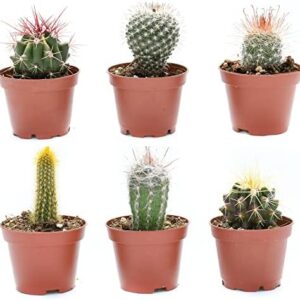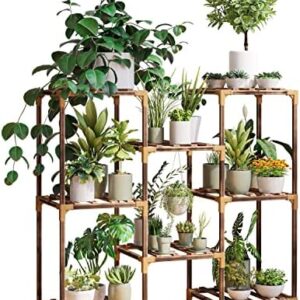Keeping a garden can be a rewarding and fulfilling experience. There is something special about watching a seedling grow into a thriving plant, something magical about nurturing nature and reaping the rewards of your hard work. However, for many of us, the thought of starting a garden can be daunting. Where do you start? What do you plant? How do you take care of your plants throughout the seasons?
If you are feeling overwhelmed by the idea of starting a garden, fear not! This complete seasonal plant guide will help you grow your garden with confidence, no matter your level of experience.
Spring:
As the weather warms up and the days get longer, spring is the perfect time to start planting in your garden. This is a great time to get your hands dirty and start sowing seeds or transplanting seedlings. Some popular spring plants to consider are tomatoes, peppers, zucchini, and cucumbers. These vegetables thrive in the warmer weather and will produce a bountiful harvest throughout the summer months.
In addition to vegetables, spring is also a great time to plant flowers. Consider adding some annuals like marigolds or petunias for a pop of color in your garden. These flowers are easy to grow and will attract pollinators like bees and butterflies to your garden.
To ensure a successful spring planting, make sure to prepare your soil by adding compost or fertilizer. This will provide your plants with the nutrients they need to grow strong and healthy. Additionally, make sure to water your plants regularly and keep an eye out for any pests or diseases that may be lurking in your garden.
Summer:
As the days get hotter and longer, summer is the time to sit back and enjoy the fruits of your labor. By now, your spring plants should be thriving and producing a plentiful harvest. This is the perfect time to start harvesting your vegetables and enjoying the fresh flavors of your garden.
In addition to harvesting, summer is also a good time to plant some heat-loving vegetables like eggplant, okra, and sweet potatoes. These plants thrive in the hot weather and will provide you with a delicious bounty throughout the fall months.
To keep your garden healthy during the summer, make sure to water your plants regularly and provide them with some shade during the hottest parts of the day. Additionally, keep an eye out for any pests or diseases that may be plaguing your garden.
Fall:
As the temperatures start to cool down and the days get shorter, fall is the perfect time to start preparing your garden for the winter months. This is a great time to plant cool-season vegetables like lettuce, spinach, and kale. These plants will thrive in the cooler weather and will provide you with fresh greens throughout the fall and winter months.
In addition to planting vegetables, fall is also a good time to start cleaning up your garden and preparing it for the winter. Remove any dead plants or debris, and add a layer of mulch to help protect your soil during the colder months.
To ensure a successful fall planting, make sure to water your plants regularly and provide them with some protection from the colder weather. Additionally, keep an eye out for any pests or diseases that may be lingering in your garden.
Winter:
While winter may seem like a dormant time for your garden, there are still plenty of ways to stay active and engaged with your plants. This is a great time to start planning for the upcoming spring planting season. Take some time to research new plants you want to try, or start seeds indoors to get a head start on the growing season.
In addition to planning, winter is also a good time to clean and organize your garden tools and equipment. Sharpen your tools, clean out your pots and containers, and make any necessary repairs to your garden beds. This will help you start the spring planting season off on the right foot.
To keep your plants healthy during the winter, make sure to provide them with some protection from the cold weather. Consider covering them with a frost cloth or bringing them indoors if temperatures drop too low. Additionally, make sure to water your plants sparingly, as they will not be actively growing during the winter months.
By following this complete seasonal plant guide, you can grow your garden with confidence and enjoy a bountiful harvest throughout the year. Whether you are a seasoned gardener or a beginner, there is something special about watching your garden grow and thrive. So grab your gardening gloves, get your hands dirty, and start planting today!






